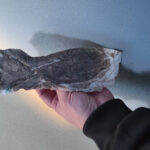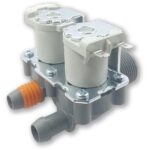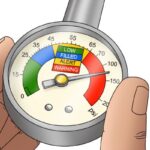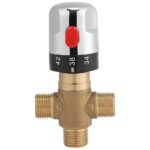Position and orientation of the solar water heater
The correct position and orientation of the solar water heater are critical for the optimal performance of the system. The solar heater must be installed in a way that maximizes the use of solar energy, reducing the need for alternative heating sources. Below we analyze the ideal orientation and other parameters to consider for the installation location.

Ideal Orientation
- Facing South
- In Greece, the best orientation is south, as it ensures maximum exposure to the sun’s rays throughout the day.
- Small deviations toward east or west (up to 10°-15°) do not significantly affect performance.
- Tilt Angle
- The tilt angle of the collector should be approximately equal to the geographic latitude of the area.
- For Greece, ideal angles range from 30° to 40°.
- If the solar heater is used mainly in winter, it can be installed with a slightly steeper tilt for better absorption of the low sun rays.
Parameters for Installation Location
1. Unobstructed Sun Exposure
- The solar water heater should be placed in a location free from shadows cast by trees, buildings, antennas, or other structures.
- Any shading, even for a few hours a day, can reduce the system’s performance.
2. Natural or Forced Circulation
- For natural circulation systems, the solar heater should be placed in a location that allows proper water flow from the collector to the boiler.
- Forced circulation systems offer greater flexibility in installation location, as a pump handles the water transfer.
3. Stable and Durable Surface
- The base of the solar heater must be stable and able to support the system’s weight.
- In windy areas, reinforcement of the base is required to prevent shifting or accidents.
4. Accessibility for Maintenance
- The solar water heater must be installed in a location that allows easy access for maintenance or repairs.
5. Distance from Residences and Water Network
- The distance from the residence and the water network should be as short as possible to reduce thermal losses in the piping.
- The pipes should be well insulated to minimize losses, especially during winter months.
Special Cases
- Installation on a Flat Roof
- The bases must be suitable for flat surfaces and withstand weather conditions.
- The piping must have the appropriate slope for natural water circulation.
- Installation on a Tiled Roof
- Special mounts are required that fix onto the tiles without causing damage.
- The installation is more complex and must be done by a specialized team.
Additional Parameters
- Protection from Weather Conditions
- In areas with strong winds, rain, or hail, adding protective measures, such as durable covers for the collectors, is recommended.
- Safety Distances
- The solar heater should not be placed too close to air conditioners or chimneys, which may affect its operation due to pollutants or heat.
- Compatibility with Heating System
- In cases of connection to radiators or other heating sources, it should be checked whether the solar heater’s position facilitates the installation of piping networks for connection to central heating.
Conclusion
The correct choice of position and orientation of the solar water heater is crucial for efficiency and long-term operation. A solar water heater installed in a location with unobstructed sun exposure, correct tilt, and orientation can save significant amounts of energy and reduce heating costs. By following the above guidelines, you will ensure the best possible performance for your solar system.
- Improvements in the Placement of the Data Logger - 29 January 2025
- Solar Water Heater Statistics – December 2024 - 10 January 2025
- Washing machines with dual water supply - 24 December 2024











